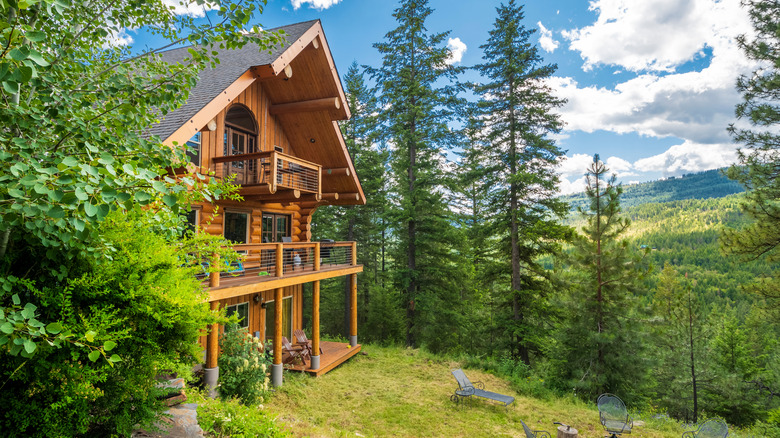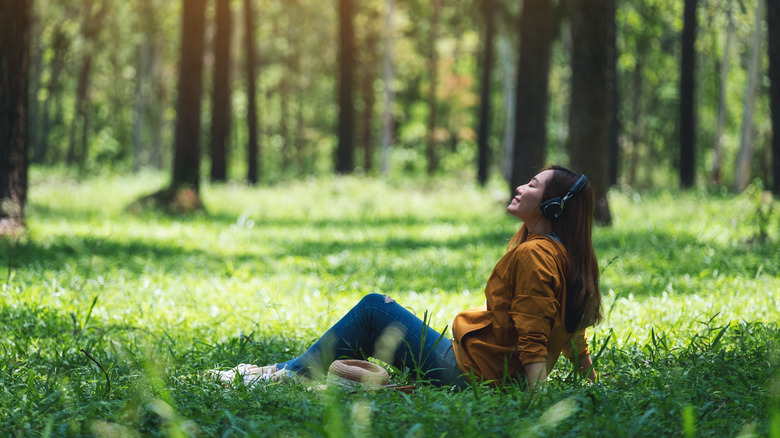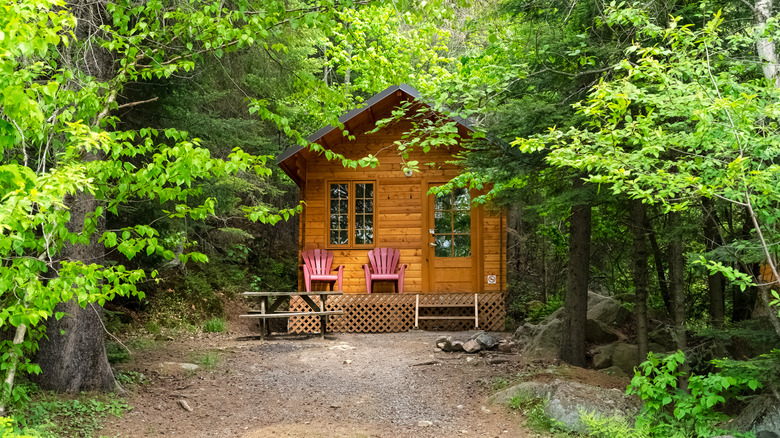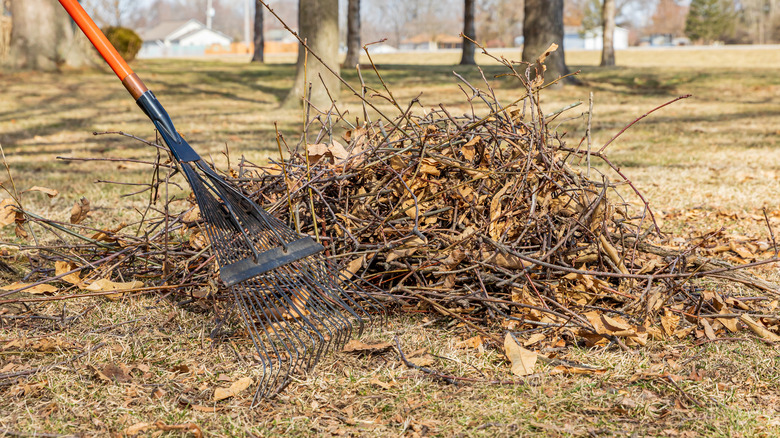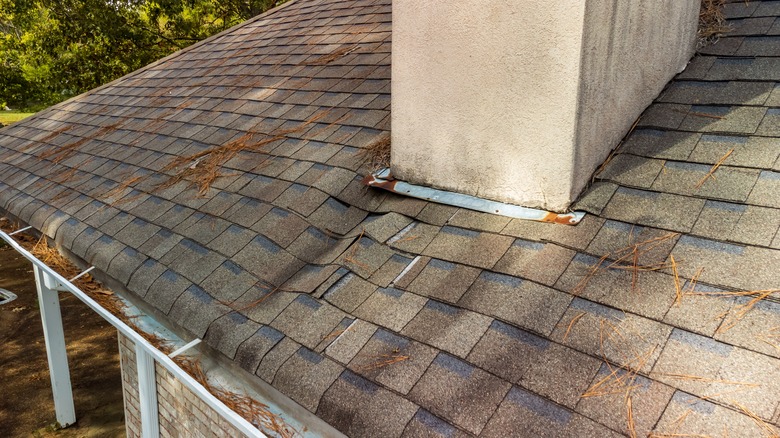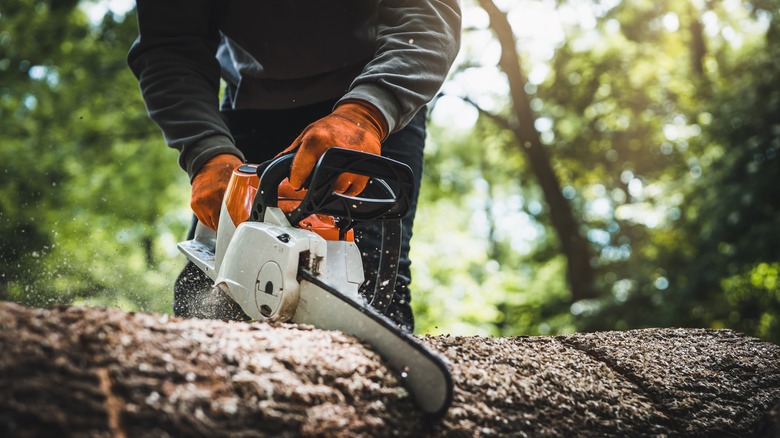5 Things To Know Before Buying A Home In The Woods
For those who dislike the hustle and bustle of city life, living in the woods probably sounds like a dream. It may be even more appealing for those who enjoy outdoor activities like bird watching, hiking, fishing, or biking. And, nature lovers are sure to relish the lush greenery.
However, living in the forest may not be as easy as you might think. While, of course, there are significant benefits, there are also some negative aspects that should be considered. Realtor.com says that, while your home in the woods may cost less, it also may not have some basic amenities like fresh water, a heating system, electricity, or internet connectivity. While you won't have to deal with traffic, you'll also most likely be far away from hospitals, work establishments, schools, and stores. And, while nature is beautiful, you'll have to learn how to deal with possible threats to safety and comfort from wildlife and harsh weather conditions.
If you're thinking about buying a home that's surrounded by wilderness, below are five things you should consider.
1. Your health may greatly improve
Before we dive into some negative aspects of buying a home in the woods, let's take a look at one huge positive: Your health may greatly improve just by moving to the countryside. If you're coming from an urban area, you'll trade in loud road noises for the sound of chirping birds and the peaceful sway of trees, which could lead to a better night's sleep.
Additionally, always being able to see a serene nature scene outside every window may decrease stress levels and allow you to truly relax. According to a study published in Nature's Scientific Reports, individuals who spent two hours in nature a week had better health and greater overall well-being than those who spent no time outside.
The University of Minnesota says that being in nature has a positive impact on us mentally, emotionally, and even physically. Mentally, the outdoors can restore your mental state and give you a more positive perspective on life. Emotionally, you may feel less stressed, anxious, angry, or afraid. Nature can also benefit you physically by reducing your blood pressure and heart rate. This could be a huge benefit to living out in the wilderness.
2. Your home will be in the shade
However, being surrounded by lush greenery isn't only positive. It also means that your home will most likely almost always be in the shade. Trees for Energy Conservation says that, while this can reduce cooling costs in the summer, it can also lead to an increase in humidity in the home. This could make your house in the woods feel like it's damp, which could also cause moss, algae, mold, or mildew to grow on the exterior of your home. Not only that, but mold could begin growing inside your home as well. Heritage House says that this is most common in older homes and begins inside the walls. Homes with gas fireplaces could also face humidity issues since these fireplaces create quite a bit of steam.
If your woodsy home begins to face dampness problems caused by shade, you could cut down some trees around your property to allow more sunlight in. However, some may not desire to do this, as it may take away from the serene ambiance around your space. If this is the case, you could use fans to create more air circulation and to dry out your home faster.
3. More yard work will be needed
Because your home in the woods will be surrounded by trees, the need for yard work will greatly increase. You'll definitely have more leaves, fallen branches, and other debris around your home than you would in a suburban neighborhood or in the city. Landscaping will also be more difficult since you'll probably hit more roots and rocks.
KG Landscape has some tips on landscaping in wooded areas. It says to use edging to designate where your yard ends and the forest begins. Further, since your yard will most likely be in lots of shade, make sure to choose shade-tolerant plants – and, you can fill in garden beds with either rocks or mulch. Fine Gardening, meanwhile, says to create a rock wall when building a garden bed on a slope. Also, make sure you place your finest landscaping in places that can be seen from inside, to provide joy both inside and outside the home. Finally, a great tip is to use a simple broom to remove twigs, leaves, pollen, and nuts from garden beds.
4. Expect to pay for roof repairs
Because you'll live in such a wooded area, the need for roof maintenance is almost a guarantee. Northpoint Roofing Systems says that a roof can be damaged by a number of things in nature. Fallen trees or large branches can damage roofs, whether they fall during a storm or because they're rotting. If you live in a cold climate, ice, snow, and hail may cause leaks and damage. Wind can tear off shingles, and vines can warp them. Algae can also deteriorate shingles, which is common in shady areas. And finally, small animals may try to find shelter in your attic, which can lead to roof damage.
Therefore, you should make sure that you're prepared to pay for possible roof maintenance. Forbes says that minor repairs typically cost anywhere from $150 to $1,500, while major roof repairs can cost up to $7,000. If you need to completely replace your roof, it may cost well over $8,000. This is why planning ahead and saving money is important when living in the woods.
5. Investing in a good chainsaw is smart
Finally, because you'll most likely be doing lots of yard work for your home in the woods, buying a quality chainsaw is important. A good chainsaw will assist you in clearing away branches, cutting down trees, and gathering firewood. Chain Saws Direct says that the most powerful models are those that run on gas – these are the best for cutting down large trees because they have a higher engine capability. Electric models are good as well and can be used on both young and mature trees. You could also purchase a pole saw to clear away smaller branches.
However, STIHL adds that you should balance comfort with power when choosing a chainsaw. If your chainsaw feels too heavy or awkward, you may want to choose a different one, even if it has less power. This will ensure your safety and also your ease of use. Also, make sure you have a very high-quality chain, as this will make work much simpler.
